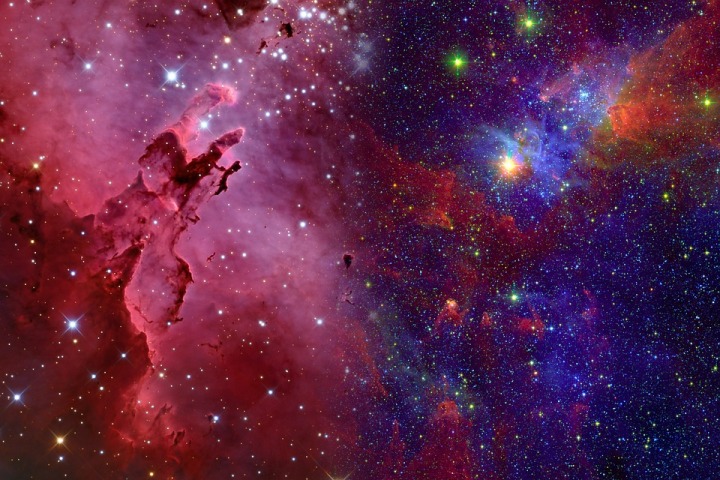Scientists explore formation of the world with study of 2 exoplanets

Scientists have discovered that exoplanets Kepler-107b and Kepler-107c, which have almost identical radii of 1.5 and 1.6 Earth radii and have densities that are over twice as different, might offer a unique insight into how worlds are formed. The study by an international team of scientists, led by Italy's National Institute for Astrophysics (INAF) and physicists from the University of Bristol in the UK, has examined exoplanets in the Kepler-107 system in order to try and understand how planets in the same system and with similar sizes can have such a wide range of densities, the Sputnik news agency reported on Wednesday.
The scientists have been studying the exoplanetary system Kepler-107 through the Telescopio Nazionale Galileo in La Palma, Spain. The study, reported in the Nature Astronomy journal, suggested that giant high-speed collisions are partly responsible for planetary evolution.
"Giant impacts are thought to have had a fundamental role in shaping our current solar system. The moon is most likely the result of such an impact, Mercury's high density may be also, and Pluto's large satellite Charon was likely captured after a giant impact but until now, we hadn't found any evidence of giant impacts occurring in planetary systems outside of our own," said Bristol's Zoe Leinhardt, a computational astrophysicist. "If our hypothesis is correct, it would connect the general model we have for the formation of our solar system with a planetary system that is very different from our own," Leinhardt added.
The team gathered more than a hundred spectroscopic measurements of all four sub-Neptune mass planets in Kepler-107. Unlike Earth's relation to the sun, the planets in the Kepler-107 system are much closer to each other and their host star.
"With this discovery, we have added another piece in the understanding of the origin of the extraordinary diversity in the composition of small exoplanets," said INAF researcher Aldo Bonomo. "We already had evidence that the strong irradiation of the star contributes to such diversity leading to a partial or total erosion of the atmospheres of the hottest planets. However, stochastic collisions between protoplanets also play a role, and may produce drastic variations in the internal composition of an exoplanet, as we think it happened for Kepler-107c," Bonomo said.
(With inputs from agencies.)
ALSO READ
Iran's Mehr news agency removes report about closing Tehran's airspace, denies publishing it
Iran warns Jordan over any moves to support Israel, Iran's Fars news agency says
Iran's state-run IRNA news agency says Tehran has fired ballistic missiles at targets inside Israel, reports AP.
Iran's state-run news agency says Iran has fired ballistic missiles at targets inside Israel
SpaceX and Blue Origin developing cargo landers for NASA's missions to Moon










